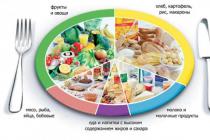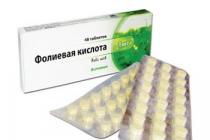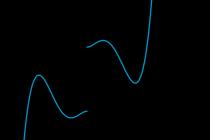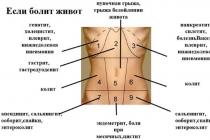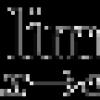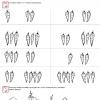Attention, like memory, is the main skill in our life. Without attention, it is difficult for a child to remember something new, repeat what has been said and apply it in life. A child needs attention for development, for moving forward, for learning, for acquiring new knowledge and skills.
It is necessary to develop not only attention, but also memory, thinking and logic.
Attention tests for children
Test one
Look carefully at the following picture, geometric shapes are depicted here in different ways. You have one minute to complete this test. Find identical geometric shapes.
If it was not possible to find the same geometric shapes in one minute, repeat the exercise.
Test two
Look carefully at the following picture, it shows different objects. You have one minute to complete this test. Find two extra pictures among all the pictures.

Test three
Look carefully at all four pictures, they show different objects, clothes and vegetables. You have one minute to complete this test. Find an extra item in each square.

Test Four
Look closely at this test, a rectangle with a certain pattern is drawn here, but not completely. You have ten seconds to complete this test. What figure, and under what number should be inserted.

Test Five
Look closely at the following picture. Children are depicted here and letters are written. You have one minute to complete this test. Decipher the children's names using letters and say their names.

Test six
Look carefully at the following picture, here are drawn: a square, a triangle, a circle and a rhombus.
The top line contains samples by which all other geometric shapes must be filled. A checkmark is drawn in a square, a minus sign is written in a triangle, a plus sign is written in a circle, and a dot is in a rhombus. One minute is given to complete the task.

Test seven
Look carefully at the next test, here is a car and a flag that indicates the finish line. You have ten seconds to complete the task. We must bring the car to the finish line.

Test eight
Regularity test.
Look carefully at the pictures, they show different objects. You have one minute to complete this test. In this test, you need to find a pattern, and draw the next or missed item.

Test nine
Look closely at these two pictures. You have ten seconds to complete this test. Find ten differences in these pictures.

Test ten
Look carefully at the next maze, it shows a monkey and a banana. You have one minute to complete this test. Help the monkey find the banana.

Exercises for the development of attention, memory and thinking of the child
Exercise 1 "Do and Tell"
Teach your child to focus on any simple activity, such as drawing. Explain to the child aloud what he should do, correct him, pronounce every movement of the child. Communicate more with the child and comment aloud on his actions.
Teach your child to follow each step in sequence. Gradually, the child will learn to do everything consistently on his own.
Exercise 2 "Find the item"
For the development of attention, the game is well suited, find the object. Look at some object in the room, for example, a pyramid. Describe the pyramid to the child so that he understands what you are describing and says what it is. For example, this object is tall, it has many details, describe what these details are, what color and size they are, and so on.
Exercise 3 "Let's look at each other"
The exercise "Look at each other" develops the child's attention well, improves memory, it is very simple, interesting and fun. Your child will enjoy playing this game. Let the child look at you carefully for a few seconds. Then he turns away and tells you everything he can remember about you.
For example, hair color, description of the face, what you are wearing, what color and so on. If the child could not tell much, do not scold him, play this game again. By studying you, the second time the child will be more attentive than the first time.
You can, even need to play this game in reverse, look at your child, turn away and describe what you remember. Your child will draw conclusions from what you said and what he missed. You can speak these conclusions, delving into the details together.
Exercise 4 "Hinder me"
An interesting exercise "Hinder me." Here you can play three together father, mother and child. The role of dad is to ask different questions to the child, for example, what color is the cube, does the car have wheels, where is the ball, what is your name and so on. The child must quickly answer questions.
The role of the mother is to distract the child when he is answering questions. If your child was able to answer questions and was not distracted, reward him. Next time he will try even better.
Two people can play this game, for example, a child recites a poem or retells a fairy tale, and you distract him.
Exercise 5 "Be careful"
Recently, very often in children's books they offer exercises for the development of memory and attention. For example:
A picture is drawn, the child looks and remembers what is shown on it. After two or three minutes, the book closes, and the child must tell what he remembered. This is a simple task, but it trains memory well.
Such an exercise can be used for any subject, look at it, remember it and then tell it. For example:
There is a carpet on the floor in your room. Consider carefully the drawing that is depicted on the carpet with the child, let the child remember this drawing. You can watch for two or three minutes. Then look away from the carpet and try to tell what you remember. Next time you can look at some painting or sculpture and talk about it. Each next lesson, you must reduce the memorization time.
Exercise 6 "Try to remember"
There are many ways to develop observation, attention and visual memory. Let's consider one of them.
For example:
For children, we will take five different items. It can be a pencil, pen, colored eraser, ball, jump rope. Let the children examine all these items, then put them in a dark bag. The children must take turns telling what they remember.
Older children and adults can also use this exercise.
For example:
Let's take more, seven or ten items. It can be a spoon, a mug, a cup holder, a medal, a beautiful stone, and so on. All these items must be quickly and carefully considered for memorization, one minute is given. Then put in a dark bag and try to tell what you remember.
With each next lesson, the memorization time should be reduced, and the number of items should be increased.
Exercise 7 "Focus on"
Put a clock in front of the TV when an interesting cartoon or fairy tale is on. Put the child in front of the TV, the child should look at the second hand for two minutes without turning his gaze to the TV screen. The child should not be distracted by the TV, he should focus on the second hand of the clock.
Exercise 8 "Remember and tell"
Look carefully at the picture, numbers are drawn here, a word is written under each number. Look carefully at the picture for one minute, then close this picture and try to write all the numbers on paper and write a word under each number.

What did you get? If there are a lot of mistakes, try to remember only the top line from zero to four, then from five to nine.
Compare what you wrote with the picture, if there are mistakes, repeat the exercise.
Exercise 9 "Remember and draw from memory"
Look at the next picture. Beads are drawn here, small beads are drawn with colored pencils, and large beads need to be colored.
Look closely at the colored beads, close them and try to color the second beads from memory.

What did you get?
Check if you painted the beads correctly or not.
Exercise 10 "Try to guess"
Check out the new puzzle exercise. Part of the word is written here, the second part of the word is drawn as a picture. You need to look carefully and say what word was intended.

After you guess all the words of the rebus, close the rebus and write all the words in alphabetical order from memory.
Educational games for children
Game 1 Pathfinder
The game "Pathfinder" develops memory.
The main essence of the game is to remember the traces of animals and repeat them.
In this game, animal tracks appear on the screen for a few seconds, look carefully and remember the order in which the tracks appear. Then you need to show which trace appeared first, and which second. Read the question correctly.

Game 2 "Diamonds"
The game "Diamonds" develops memory.
The main essence of the game is to remember the order of the lit figures on the screen and repeat it.
Figures light up on the screen in turn, remember the order of ignition of these figures and repeat it. This can be done using the mouse or the cursor on the keyboard.
If you answered correctly, then you continue to score points and play further.

Game 3 "Speed comparison"
The game "Speed comparison" develops memory and attention.
An object is displayed on the screen, you memorize it and compare it with the next object, if the object is the same, then answer “yes”, if different objects answer “no”. You can answer using the buttons below "yes" and "no".
If you answer three times incorrectly, then the game ends. If you answer correctly, you continue to play further and score points.

Game 4 "Complex high-speed traffic"
The game "Complex high-speed movement" develops memory and attention.
The main essence of the game is to remember the previous item and compare it with the current one on the screen.
An object is displayed on the screen, you memorize it and compare it with the next object, if the object is the same, then answer “yes”, if different objects answer “no”, if the objects are similar, answer “partially the same”.
This game is designed to increase speed. If you answer three times incorrectly, then the game ends. If you answer correctly, you continue to play further and gain points.

Game 5 "Memorize and click"
The game "Memorize and click" develops memory and attention.
The main essence of the game is to remember the numbers in the table and click them in ascending order.
In this game, a table with numbers is given, first the numbers are shown on the screen, they must be remembered, then the numbers are closed. Remember where the smallest number is located and click this cell, then click the cell where the next number goes in ascending order.
If you answer correctly, then you score points and continue to play further.

Game 6 "Numerical coverage"
The game "Numeric Coverage" develops memory and attention.
The main essence of the game is to remember the previous figure and compare it with the current one on the screen.
In this game, numbers appear on the screen for a few seconds, you need to remember them, then they disappear, and an empty window remains, you need to remember and write the numbers that you remember in the empty window. if you get the numbers wrong three times, the game ends.

Game 7 "Memory Matrix"
The game "Memory Matrix" develops memory and attention.
The main essence of the game is to reproduce the position of the shaded figures.
In each round, a playing field is shown, consisting of cells, a certain number of cells are painted over, the rest remains free. You need to remember the location of these cells and repeat their position after they disappeared on the screen. If you mark the cells correctly, then you score points and move on to play.

Game 8 "BrainFood"
The game "BrainFood" develops memory and attention.
The main essence of the game in each round is shown a set of elements, you must choose from the set one that has not yet been selected in previous rounds.
In this game, drinks and food are offered on the screen. You have to choose one. In each next round, you must choose a different dish that differs from the previously selected dishes. You have to remember and always choose different dishes and drinks. If you answer correctly, then you score points and continue to play further.

Game 9 Super Memory
The game "Super Memory" develops memory and attention.
The main essence of the game every round a new object appears on the screen, you must specify it by clicking on it.
In this game, a round starts and a picture appears on the screen, in the next round another picture appears and the old picture is saved. You only need to click a new picture, old pictures do not need to be clicked again. If you answer correctly, then you score points and continue to play further.

Game 10 "Spatial Velocity Comparison"
The game "Spatial speed comparison" develops memory and attention.
The main essence of the game on the screen is a series of drawings; they must be compared with the previous drawing and answer whether it repeats or not.
In this game, a figure appears on the screen, you have to remember it, then it disappears and another figure appears. Compare the figure on the screen with the previous figure. You can answer using the buttons below "yes" and "no". If you answer correctly, you score points and play further.
The secrets of brain fitness, we train memory, attention, thinking, counting
If you want to overclock your brain, improve its performance, pump up memory, attention, concentration, develop more creativity, perform exciting exercises, train in a playful way and solve interesting puzzles, then sign up! 30 days of powerful brain fitness are guaranteed to you :)

Super memory in 30 days
As soon as you sign up for this course, a powerful 30-day training for the development of super-memory and brain pumping will begin for you.
Within 30 days after subscribing, you will receive interesting exercises and educational games in your mail, which you can apply in your life.
We will learn to memorize everything that may be required in work or personal life: learn to memorize texts, sequences of words, numbers, images, events that occurred during the day, week, month, and even road maps.

Money and the mindset of a millionaire
Why are there money problems? In this course, we will answer this question in detail, look deep into the problem, consider our relationship with money from a psychological, economic and emotional point of view. From the course, you will learn what you need to do to solve all your financial problems, start saving money and invest it in the future.

Speed reading in 30 days
Would you like to read interesting books, articles, mailing lists and so on very quickly.? If your answer is "yes", then our course will help you develop speed reading and synchronize both hemispheres of the brain.
With synchronized, joint work of both hemispheres, the brain starts to work many times faster, which opens up many more possibilities. Attention, concentration, perception speed amplify many times over! Using the speed reading techniques from our course, you can kill two birds with one stone:
- Learn to read very fast
- Improve attention and concentration, as they are extremely important when reading quickly
- Read a book a day and finish work faster
We speed up mental counting, NOT mental arithmetic
Secret and popular tricks and life hacks, suitable even for a child. From the course, you will not only learn dozens of tricks for simplified and fast multiplication, addition, multiplication, division, calculating percentages, but also work them out in special tasks and educational games! Mental counting also requires a lot of attention and concentration, which are actively trained in solving interesting problems.

Conclusion
Love your children, create comfortable conditions for them to live and develop, help them develop attention and memory with the help of tests, educational games and exercises. We wish you good luck.
Tests, especially intellectual ones, are important for employers, as well as for job seekers, because it is interesting and useful to find out your IQ level, assess your ability in mathematics, logic, and assimilation of information. These psychological tests are understandable only to professional psychoanalysts, but with Eysenck's tests or other similar ones, it's easier - I wrote it, saw the assessment, understood approximately my level and what needs to be improved.
For employers, tests for attentiveness when applying for a job help to check not something specific, but to find out how well the candidate learns new data, quickly finds associations. This does not apply to professional skills, they are checked at other stages, but if the applicant is not able to understand logical connections, instantly read small texts, he is automatically eliminated and simply does not reach the test of professional abilities.
What are attention tests?
Large domestic companies, branches of top international corporations, when hiring, use, to a greater extent, tests from SHL, Kenexa, Talent Q. These tests consist of verbal, numerical, abstract-logical parts, and logical and verbal ones can be classified as attentiveness tests tasks.
If we talk about companies that use such testing, then there are many of them, and more and more every month. All branches of foreign corporations use the SHL or Talent Q tests, where one part is numerical tasks, the second is verbal or logical tasks. We can say that every candidate for open positions in these companies passes the test of attentiveness, since he will definitely meet verbal or logical tests. Leading companies in Ukraine, Russia, Kazakhstan have also been using testing for a long time, more and more mid-level firms include tests in the selection process.
Banks, energy companies, construction, transport, marketing firms, automakers are among those using mindfulness tests in hiring, and job seekers need to be prepared for this.
Structure of mindfulness tests
Although when solving verbal and logical tests it is necessary to use logic, outwardly they, and in filling with information, differ radically. Verbal tasks are a small text with textual statements, logical examples consist of a number of pictures, and the answer is another picture from the ones below. The verbal task is a text, the logical task is a graphic image.
Includes text on a specific topic, in which the information relates only to it. Then there are statements on a given topic, and the test-taker must mark each as “true”, “false”, “uninformative”. The texts are quite complex, there can be scientific, medical, psychological topics, and in a minute the applicant must catch the meaning of the information, and then understand the connection between the statements and certain places in the text in order to indicate whether they are true or uninformative.
Logical examples consist of several pictures, which depict geometric shapes that change according to certain laws, and below there are a number of shapes, one of which should continue the sequence. The tasks are also quite difficult, especially when several figures are placed on the pictures, “embedded” one into one, and they are transformed in their own way. Back in the 30s of the 20th century, the outstanding scientists Penrose and Raven developed progressive matrices, very similar to modern logic tests, and they assessed three processes of brain activity - mindfulness, perception, thinking.
You don’t even have to plan to write off tests for attentiveness when applying for a job or somehow get around them, these examples are almost never repeated, because there are thousands of them in the database, and, for example, Talent Q made a dynamic system that changes the level of complexity of tasks right on testing. Anyone who has seen abstract-logical tasks also understands the meaninglessness of remembering something, when each new example is a series of pictures that are different from the previous ones, and one must look for a relationship between them while there is time.
It is important that in recent years testing has been carried out via the Internet, so you can also train remotely, and some employers (Big 4 companies, other international corporations) or some developers of solution collections provide this opportunity. Trial tests from employers are usually much simpler than the “original ones”, but you can understand the structure, the way the material is presented, but in order to solve complex problems, it is better to purchase a collection where there are answers to the tasks and explanations.
You should especially work on mindfulness, for example, logical tests with pictures cause difficulties at the last stage, when the human brain gets tired and is not able to distinguish between sequences, although the first examples of the test were given quite simply. With verbal tasks, similar difficulties can also arise, because you need to read an unfamiliar text, and then try to find specific information in it that confirms or refutes the judgments of the compilers.
Each applicant is able to achieve the best results, for this you just need to train more, use all available examples of verbal and logical tests, and not count on the help of friends.
Take the test and find out your level of concentration
You probably guess that psychology has already come up with more accurate tools, instead of bowls of oil, for diagnosing such an important mental function as attention. If you think that bitter truth is better than sweet lies, you can take a chance. We invite you to check the level of concentration of attention of yourself, and if you are also a leader, the level of absent-mindedness of your subordinates. The next three tests of attention are the most reliable tests that currently exist in psychology.
Münsterberg technique
is a continuous literal text, among which there are words. The task of the subject, reading the text, is to find these words as quickly as possible. You have two minutes to work. Before taking the test, print it out on paper, find a stopwatch, or ask a friend to be the judge. Each found word is underlined with a pencil. After the subject finishes, it is necessary to count the number of underlined words and compare with the correct answer.
bsolntsevtrgshchoirayonzshguchnovest'khhegchyafactsukexamtrochagshch
gckprocuratororgstabeyuteoriyantobzheubhama'hockeytruitsfzuigtele
visorboljschehuelgshbmemoryshogeyuzzhpzhdregschknodvosperceptiontsukengo
fromkhwafyproldloveloveavyfprodspectacljachsimtbyunbyerjoywufts
yeoljnarodoldjbshyrreportagezhdorlafyviewefbeaucompetitionfnyuvskaya
proprietyjheyudshschgloginepppprswimmingfailbeprtcomedyschl
odkuidespairenfrlnyachvtjheftasenlaboratorygshdshiutstrrilont
ovation.
In this test, 23 words are encrypted. If you miss 2 minutes, it means that your attention span is below average. If in 2 minutes you have found all the words, this is a good result. If you even have time left, this is a great result. If you found less than 23 words, then for each missing word you add a 5 second penalty (the threshold time is exactly 2 minutes).
Schulte tables
The table is a set of numbers (from 1 to 25) located in random cells. The subject must show and name all the numbers from one to twenty-five as quickly as possible. You can fix the numbers only with a glance or with a pen, but do not leave marks. Five tables for five attempts are given. It is necessary to record the time spent on this work.
Evaluation of results.
- Concentration of attention at a good level - if the time spent on each of the tables is no more than 40 seconds inclusive.
- Concentration of attention at a sufficient level - if no more than 50 seconds are spent on each of the tables.
- The concentration is weak - if more than 50 seconds are spent on each of the tables.
Method "10 words"
This test is based on the close relationship between attention span and short-term memory. The subject is read ten random words, selected without obvious semantic and associative connections. After a single reading, it is proposed to reproduce all the words in any order. If you work on your own, you need to read ten words only once, carefully reading each concept, and reproduce them by bending your fingers.
5 sets of 10 words are given (for five attempts).
1. Book, rose, domino, yacht, rabbit, glasses, brick, nest, needle, double bass.
2. Swamp, prince, cat, shop, school desk, football, cloud, jellyfish, picture, thermometer.
3. Axe, thunderstorm, wine, armor, zoo, samurai, factory, weight, baron, ore.
4. Cinema, apple, teapot, miracle, rhinoceros, October, finish, brush, grain, paper.
5. Cabbage, sword, pillow, road, saw, hill, fence, pipe, wedding, mosquito.
Evaluation of results.
The concentration of attention is good if after one reading it is possible to reproduce 8 or more words. The concentration of attention is satisfactory if you can reproduce 7 words. The concentration of attention is weak if it is possible to reproduce less than 7 words.
——————————————————————————————————-

Then go through this, take a couple of exercises you like and train your attention. For one month of work in pleasure (exercises are very exciting!). You will improve concentration by 50-70%.
Good luck, you will succeed, I know, because I did it!
A psychological test to determine the level of your attentiveness will help you determine which of the three groups of people you belong to: insightful, attentive or absent-minded people. Our test will give you a reason to think and draw certain conclusions for yourself. Answer all questions honestly and without much thought. At the end of the test, you will be given an assessment of your attentiveness level with some comments. Our online test: [Attention Test] is completely free without SMS and registration! The result will be shown immediately after the answer to the last question!
The test contains 15 questions!
Start test online:
Other tests online:| Test name | Category | Questions | ||
| 1. | Determine the level of your intelligence. The IQ test lasts 30 minutes and contains 40 simple questions. | intelligence | 40 | |
| 2. | IQ test 2 onlineDetermine the level of your intelligence. The IQ test lasts 40 minutes and contains 50 questions. | intelligence | 50 | Start test: |
| 3. | The test allows you to improve your knowledge of the road signs of the Russian Federation, approved by the rules of the road (SDA). Questions are randomly generated. | knowledge | 100 | |
| 4. | Test for knowledge of the states of the world by flags, location, area, rivers, mountains, seas, capitals, cities, population, currencies | knowledge | 100 | |
| 5. | Determine the character of your child by answering the simple questions of our free online psychological test. | character | 89 | |
| 6. | Determine your child's temperament by answering the simple questions of our free online psychological test. | temperament | 100 | |
| 7. | Determine your temperament by answering the simple questions of our free online psychological test. | temperament | 80 | |
| 8. | Determine the type of your character by answering the simple questions of our free online psychological test. | character | 30 | |
| 9. | Determine the most suitable profession for you or your child by answering the simple questions of our free psychological | profession | 20 | |
| 10. | Determine your level of sociability by answering the simple questions of our free psychological online test. | sociability | 16 | |
| 11. | Determine the level of your leadership abilities by answering the simple questions of our free online psychological test. | leadership | 13 | |
| 12. | Determine the balance of your character by answering the simple questions of our free online psychological test. | character | 12 | |
| 13. | Determine the level of your creativity by answering the simple questions of our free online psychological test. | capabilities | 24 | |
| 14. | Determine the level of your nervousness by answering the simple questions of our free online psychological test. | nervousness | 15 | |
| 15. | Determine if you are attentive enough by answering the simple questions of our free psychological online test. | attentiveness | 15 | |
| 16. | Determine if you have a strong enough will by answering the simple questions of our free online psychological test. | strength of will | 15 | |
| 17. | Determine your visual memory level by answering our free online psychological test. | memory | 10 | |
| 18. | Determine your level of responsiveness by answering the questions of our free online psychological test. | character | 12 | |
| 19. | Determine your tolerance level by answering our free online psychological test. | character | 9 | |
| 20. | Determine your lifestyle by answering our free online psychological test. | character | 27 |
Attention is a clear concentration of consciousness.
It is very important for every person to have good attention; with good attention, memory, thinking, and imagination improve.
The attention of each person is different, someone quickly navigates, and someone needs time to think, concentrate, some get lost in simple situations.
We invite you to take the attention test. The test consists of twenty tasks. Ten seconds are given for each task.
If you missed ten seconds, then everything is fine with you, you are an attentive person, if you didn’t fit in ten seconds, then you need to practice, solve exercises and take care of your attention.
Test for the development of memory and attention
Test one
Look carefully at the next task, it also consists of the words "You", but in this test there is one word "Тъi". Find this word. You have ten seconds to complete the task.
Test 2
Look carefully at the following test, you need to find an error in this test. You have two seconds to complete the task.

Test 3
This quiz is given numbers: 1, 3, 5, 7, 9, 11, 13, 15. Fill in the blanks with a question mark using the given numbers. The same number can be used multiple times. You have one minute to complete this test.
Can you solve it?

Test 4
Look carefully at the next test, two birds are shown here. Find the difference in this picture. You have ten seconds to complete this test.

Test 5
This text contains a large number of figures. We need to find two numbers 514926. They can be placed in any order. You have thirty seconds to complete the task.
Find two numbers 514926.

Test 6
Look closely at the next test. Here is a picture, it shows attack aircraft. It is necessary to find a panda among all attack aircraft. You have ten seconds to complete the task.

Test 7
Look carefully at the following picture, it shows triangles. They are located in different directions. Among these triangles, you need to find a heart. Ten seconds are given to complete the task.

Test 8
Look carefully at the following picture, it shows cats. A dog is hiding among these cats. You have ten seconds to complete the test, you need to find a dog among the cats.

Test 9
Look carefully at the following picture, it shows dogs. Among these dogs, one cat is hiding. You have ten seconds to complete the test, you need to find a cat among the dogs.

Test 10
Look closely at this test, this test shows piglets. These piglets are chewing clover. You have ten seconds to complete the task. Find a four-leaf clover.

Test 11
Look closely at the picture of this test. Here are zebras. You have ten seconds to complete this test. Find one lion among the zebras.

Test 12
Look carefully at the following picture, sheep are depicted here. You have ten seconds to complete this test. Find one goat among the sheep.

Test 13
Look carefully at the next two pictures, one shows wolves, and the other shows foxes. You have one minute to complete this test. In one picture you need to find a raccoon, and in the second picture you need to find a panda.

How many raccoons are in the picture? How many pandas are in the picture?
Test 14
Look closely at the following picture. You have one minute to complete this test. In this picture you need to find an animal.

Test 15
Look closely at the following picture. Santa Clauses are drawn here. One minute is given to complete the test. Among the Santa Clauses, you need to find one sheep.

Test 16
Look closely at the picture of this test. One minute is given to complete the test. In this picture, you need to find one animal.

Test 17
Look closely at the picture of this test. It has a lot of pandas on it. You have one minute to complete this test. Find one mouse among the pandas.

Test 18
Look closely at this test. It consists of the letters "X". You have ten seconds to complete the task. Find five "Y"s.

Test 19
Look carefully at this test, different objects are depicted here. You have one minute to complete this test. Find three pandas in this picture.

Test 20
Look carefully at the picture of this test, owls are depicted here. You have one minute to complete this test. Find one cat among the owls in this picture.

Simple exercises to develop good attention and memory
- Let's start with the simplest, you need to go to the grocery store. Do not take with you a cheat sheet on which a list of goods is written, write it down and try to remember what you wrote, then go to the store. If the situation is completely hopeless, then take your grocery list with you, but try not to get it out of your bag. Buy as a keepsake, and at the very end, take it out and check if you bought everything or not.
- When you talk with employees, with a neighbor on the landing, with a girlfriend or friend, try to remember as much as possible: eye color, clothes, some small things done on clothes or on a person. Listen carefully to what they say to you, delve into every detail .After the conversation, try to remember everything to the smallest detail and scroll again in your head. This way you can train auditory and visual memory.
- Train yourself to read, it can be any time during your lunch break or before bed. You can read one to five pages at first, and gradually try to reach at least ten or twenty pages. Read carefully. After you read it, try to retell it in as much detail as possible. If there is no time to retell what you have read, then you can do this while you are eating at home or going to the store.
- On the way to work or to the store, you can remember the numbers of houses or the numbers of cars that pass by. This is good for memory training.
- Try to remember the price tags in the store for the items you buy. Having memorized the prices, you can compare them with the prices of another store.
- If you are preparing a new dish, try to remember it according to the new recipe. You can try to write it from memory, on paper and then check it with the original recipe.
- Learn a poem by heart, please your loved one or loved one with it. Learn the words to a new song. On the way to work or to the store, you can hum a new song to yourself.
- If you are on foot, try changing your route and taking a different road. Watch carefully what new and interesting things you saw while walking, perhaps beautiful houses and unusual signs on shops, maybe beautiful flowers or fluffy blue Christmas trees. When you get home, remember your new route and go over it again in your head. What do you remember about him? What are your impressions of this route? What new did you see?
Exercises for the development of attention and memory
Exercise 1 "Remember and write"
Look carefully and remember the following picture, this picture shows animals, mammals, fish. One minute is given for memorization.
Now close the picture and write on paper from memory all the animals, mammals and fish in alphabetical order.

Write in which direction the animals are facing.
If you remember not all the animals or in the wrong order, then repeat the exercise.
Exercise 2 "Remember and write in the correct order"
Look at the next pyramid, it consists of numbers, one digit is added in each subsequent line. First remember the first three lines, close the pyramid and write the numbers from memory.

Check yourself if you remember everything correctly or not.
Now memorize one more line and write four lines from memory. Each next time add one line and remember.
Remember and write all the numbers of the pyramid in full.
Exercise 3 "Remember and put down dots from memory"
Look at the following picture, it is divided into two parts, circles are drawn at the top of the picture, and there are no circles at the bottom of the picture. Remember in which cells the circles are drawn, close the first picture and draw circles from memory in the second part of the picture. One minute is given for memorization.

Check what you got. If you have mistakes, then repeat the exercise again.
Exercise 4 "Remember the words and write from memory"
In this exercise, three columns with different words are given, read and memorize them. One minute is given for memorization. Close the words and write them down on paper from memory in the same order.

See what you got. If you wrote incorrectly, look again carefully and repeat the exercise.
Then look again at the words and close them. Write all the words in alphabetical order. Repeat if necessary.
Exercise 5 "Memorize and draw shapes"
Look at the following picture for one minute. Then close this picture and try to draw these shapes in the same arrangement on the paper.

If you find it difficult to remember all the details, do not be discouraged, take only the top part of the picture and try to remember it. Then look at the bottom of the picture and try to draw the details of the bottom picture on paper.
After you draw the details on paper, try to compare with the picture. What did you get? On the bottom part, try to draw the top part of the picture from memory. If there are mistakes, try to repeat the exercise.
Exercise 6 “Remember and write numbers and words from memory”
Look carefully at the picture, ten numbers are drawn here, a word is written under each number.
Look carefully at the picture for one minute, then close this picture and try to write all the numbers on paper and write a word under each number.

What did you get? If there are a lot of mistakes, try to remember only the top line from zero to four, then from five to nine.
Compare what you wrote with the picture, if there are mistakes, repeat the exercise.
Exercise 7 "Remember and draw from memory"
Look at the next picture, it shows a clock. Look carefully which numbers are drawn on it more, less, what dashes on the numbers. Look at the picture for one minute, then close the picture and try to draw a clock on paper.

What did you get? If you failed to remember and draw everything completely, divide the clock in half and remember half. Then try to remember the other half and draw it on paper. Repeat if necessary.
Exercise 8 "Remember and write in different colors"
Look at the next exercise, the numbers are written here in two different colors. Look closely at these numbers for one minute and try to remember them.

Close these numbers and try to write everything that you remember on paper. Check yourself, if there are a lot of mistakes, try to remember the first two lines and then write them.
Then try to remember and write the second two lines. If everything is correct, you can practice and write all four lines.
Try to remember the last two lines and write them, and then remember the two lines in the middle and write them too. Do not forget that some numbers are written in red.
Exercise 9 "Remember and continue the pattern from memory"
In this exercise, samples of patterns are given, they must be remembered and continued in the same way as in the example.

First, try to complete the task under the number one.
Remember the pattern under the number one, close the sample and continue to remember to connect the circles according to the sample.
Now look at the sample drawing under the number two. Close the sample and connect the triangles as a keepsake.
After completing the task under the number two, proceed to the task under the number three. Here you need to remember in what order the squares are connected. After you remember, close the picture and try to connect the squares in the same way.
Exercise 10 "Memorize and draw shapes"
Look at the next two pictures for 20 seconds, close them and say how many identical figures are drawn in these pictures. Draw them from memory.

Now look at these two pictures again for 20 seconds and close the pictures.
How many different pictures are shown in these two pictures.
Test yourself. Repeat if necessary.
Educational games for the development of attention
Game 1 "Submarines"
The game "Submarines" develops attention.
Submarines move in the sea in the following directions: left, right, down, up. The question appears on the screen: “Where are the boats pointing?”, “Where are the boats moving?”. Look carefully at the question, at the movement of the boats and their direction. Use the arrows to answer the question correctly. For the correct answer you get points and play further. If you have three incorrect answers, the game ends.

Game 2 Stroop Challenge - Reboot
The main essence of the game is to compare the value of the left card and the color of the right card.
It is necessary to correctly determine the name of the color on the left card matches the color of the text on the right card. If it matches, answer "yes", if it does not match, answer "no". Below are two buttons "yes" and "no". You can use the arrow keys on your keyboard. If you answer correctly, you score points and move on to play.

Game 3 "Red-black Schulte tables"
The game "Red-black Schulte tables" develops attention.
The main essence of the game is to correctly click the black squares in ascending order, and the red squares in descending order.
This game alternates between numbers and buttons. Read the question correctly and press the correct number. First you need to press the minimum black number, then the maximum red number, now again the minimum black number, then the maximum red number, and so on.

Game 4 "Find the figure"
The game "Find the figure" develops attention.
The main essence of the game is to find a pair to the hidden picture.
In this game, many objects are drawn; from them, you need to choose one object that is similar to a given object. If you have chosen correctly, then you score points and play further.

Game 5 "Sharp eye"
The Vigilant Eye game develops attention.
The main essence of the game is to remember where the bird, ship and sun are and then indicate where they were.
A screen opens for a few seconds, a bird, a ship and the sun are drawn on it. You have to remember where they are. Then the question is displayed: "Click where the ship was." You must indicate where the ship was. Then the question is displayed: "Click where the bird was." You must indicate where the bird was. Then the question is displayed: "Click where the sun was." You must answer where the sun was and so on. If you answered correctly, then score points and play further.

Game 6 "Click in the right order"
The game "Click in the right order" develops attention.
The main essence of the game is to click in order all the numbers in the table in ascending order.
In this game, a table with numbers is drawn. Look carefully and click all the numbers in ascending order. If you hit all the numbers correctly, you score points and continue playing.

Game 7 "Flanking task"
The game "Flanking task" develops attention.
The main essence of the game is to indicate where the bird flies in the center of the flock.
In this game, a flock of birds flies across the sky, you need to determine where the central bird flies. You can answer using the cursor. If you answer correctly, score points and move on.

Game 8 "Airport"
The game "Airport" develops attention.
The main essence of the game is to indicate where the blue plane is flying and where the red one is flying from.
In this game, helicopters, planes and various aircraft fly across the sky. An airplane is drawn in the center, it is necessary to correctly answer the questions posed and indicate: "Where the plane flies" and "Where the plane flies from." If you answer correctly, you score points and play further.

Game 9 "Visual search"
The game "Visual search" develops attention.
The main essence of the game is to find a figure that is not like the others.
In this game, different geometric figures are given, you need to find among all the figures one that is unlike the others. If you answer correctly, then score points and play further.

Game 10 "Click in the correct order plus"
The game "Click in the correct order plus" develops attention.
This game is given a table filled with numbers. To complete the game, you need to find and click all the numbers in ascending or descending order, depending on the task. If the task is: “Click on the numbers in descending order,” then you must first find the largest number and move from it to the smallest. If the task is: “Click on the numbers in ascending order,” then you are looking for the smallest number and moving from it to the largest. But if you missed a number, then life is removed.
The secrets of brain fitness, we train memory, attention, thinking, counting
If you want to overclock your brain, improve its performance, pump up memory, attention, concentration, develop more creativity, perform exciting exercises, train in a playful way and solve interesting puzzles, then sign up! 30 days of powerful brain fitness are guaranteed to you :)

Super memory in 30 days
As soon as you sign up for this course, a powerful 30-day training for the development of super-memory and brain pumping will begin for you.
Within 30 days after subscribing, you will receive interesting exercises and educational games in your mail, which you can apply in your life.
We will learn to memorize everything that may be required in work or personal life: learn to memorize texts, sequences of words, numbers, images, events that occurred during the day, week, month, and even road maps.

Money and the mindset of a millionaire
Why are there money problems? In this course, we will answer this question in detail, look deep into the problem, consider our relationship with money from a psychological, economic and emotional point of view. From the course, you will learn what you need to do to solve all your financial problems, start saving money and invest it in the future.

Speed reading in 30 days
Would you like to read interesting books, articles, mailing lists and so on very quickly.? If your answer is "yes", then our course will help you develop speed reading and synchronize both hemispheres of the brain.
With synchronized, joint work of both hemispheres, the brain starts to work many times faster, which opens up many more possibilities. Attention, concentration, perception speed amplify many times over! Using the speed reading techniques from our course, you can kill two birds with one stone:
- Learn to read very fast
- Improve attention and concentration, as they are extremely important when reading quickly
- Read a book a day and finish work faster
We speed up mental counting, NOT mental arithmetic
Secret and popular tricks and life hacks, suitable even for a child. From the course, you will not only learn dozens of tricks for simplified and fast multiplication, addition, multiplication, division, calculating percentages, but also work them out in special tasks and educational games! Mental counting also requires a lot of attention and concentration, which are actively trained in solving interesting problems.

Conclusion:
Attention tests help focus and develop your attention. Take attention tests, solve exercises and play educational games to develop attention. We wish you good luck.

